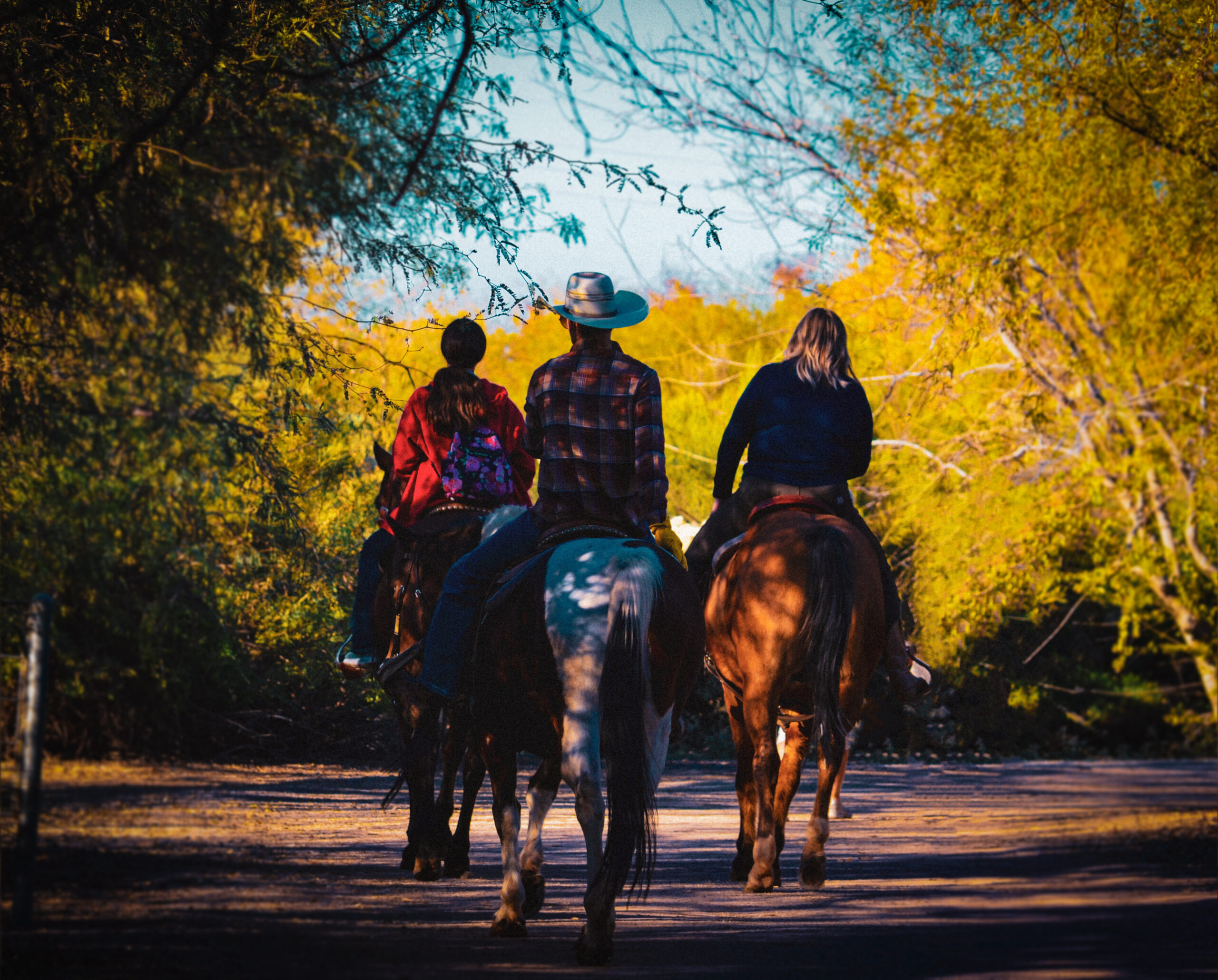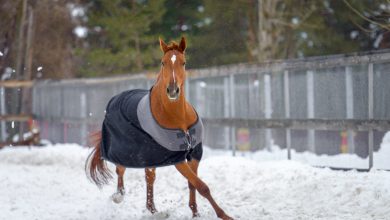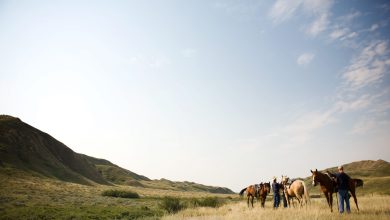
If you find yourself riding point on the trail as the lead horse, you have some extra responsibility on your hands. You want to ensure that the group you’re leading stays safe, and has an enjoyable ride. When you find yourself at the front, try these tips to be a good leader and practice lead-horse etiquette on the trail.

Don’t Assume Everyone is Game for a Fast Pace
You can’t make assumptions about the other horses in the group. This means you cannot assume that the folks behind you are ready and willing to change up gaits, cross every obstacle, and are comfortable with a faster pace. If you’re going to be leading the group, take a few minutes before the ride to check in with the other riders’ abilities, and their horse’s training level.
You might be on a seasoned trail horse, but if other members of your group are on green horses, don’t just take off at a dead run. That’s a recipe for disaster for those behind you. Also, galloping down the trail with a group of horses can pose serious risks to everyone in the group, and other people on the trail. When you do change up the pace or gait, check behind you with a verbal confirmation that everyone is doing alright.
Have a Plan to Slow Down
When you do quicken your pace, have a plan to bring things back to a controlled stop or slower speed. As the lead horse, you are setting the pace for the group. Slamming on your brakes can cause the horses behind you to pile up and have to stop unexpectedly. This can get you in trouble and cause injury to the other rider’s or horses.
Use a hand signal or verbal signal that you’re going to be slowing down, to give other rider’s behind you notice. Then, the rider behind you should relay that message to the rest of the group, so everyone has a heads up about the change of pace.
Be Alert About Upcoming Obstacles
If you have the best vantage point from the front, it’s your job to alert fellow rider’s behind you about upcoming obstacles. Notice a water crossing up ahead? Relay that information back to the group. This might be a good time to take a quick break and ensure that everyone is on a horse that is comfortable crossing water, or be prepared to help a nervous horse across.
Riding through thick branches and have to duck? Give everyone else a heads up to…not keep their head up. See a hole that could easily catch a hoof? Point it out with hand signals or verbal cues to the other rider’s behind you, to avoid injury. When crossing obstacles, stick to a safe pace and don’t ride off without ensuring that all members of the group have safely crossed.
Check Behind You
It’s not a great feeling when you’re at the back of the pack and have to stop, just to watch your group ride off without noticing you’re left behind. If a rider at the back has to dismount, check their cinch, or is having problems with their horse, they should let the rest of the group know. However, when you’re on the lead horse of the pack, take time to look over your shoulder and make sure that everyone is accounted for.
This is also a good time to check your pace. If you’re half a mile ahead of everyone else, you might need to rein up and slow down. Taking time to glance behind you and check on the group is a responsibility of the lead rider, and also a common courtesy to your friends following your lead. Should you notice that a slow-moving horse is falling behind, it might be a good time to switch things up. That horse might be more comfortable and motivated in the middle of the group, or you might need to check your pace.
Let Others Lead
If there are other rider’s that would like to take a turn up front, don’t be afraid to switch positions in the group. Letting other horse’s have an opportunity to lead the group is a good experience, and can build confidence for both horse and rider. It’s a great learning experience for a horse to practice being up front, in the middle of the pack, and as the horse bringing up the rear. Take turns in different spots and advocate for yourself if you feel your horse needs a different spot for an enjoyable ride.
[Learn More About Group-Ride Etiquette on the Trail]



